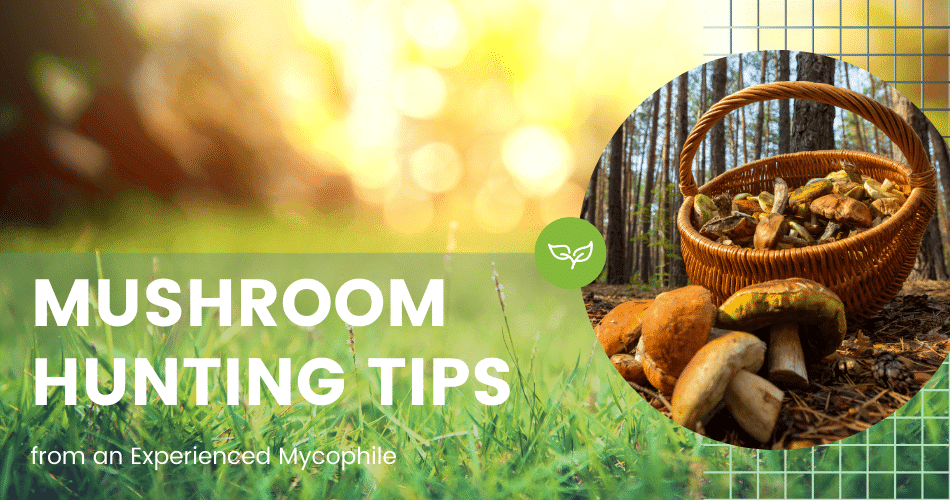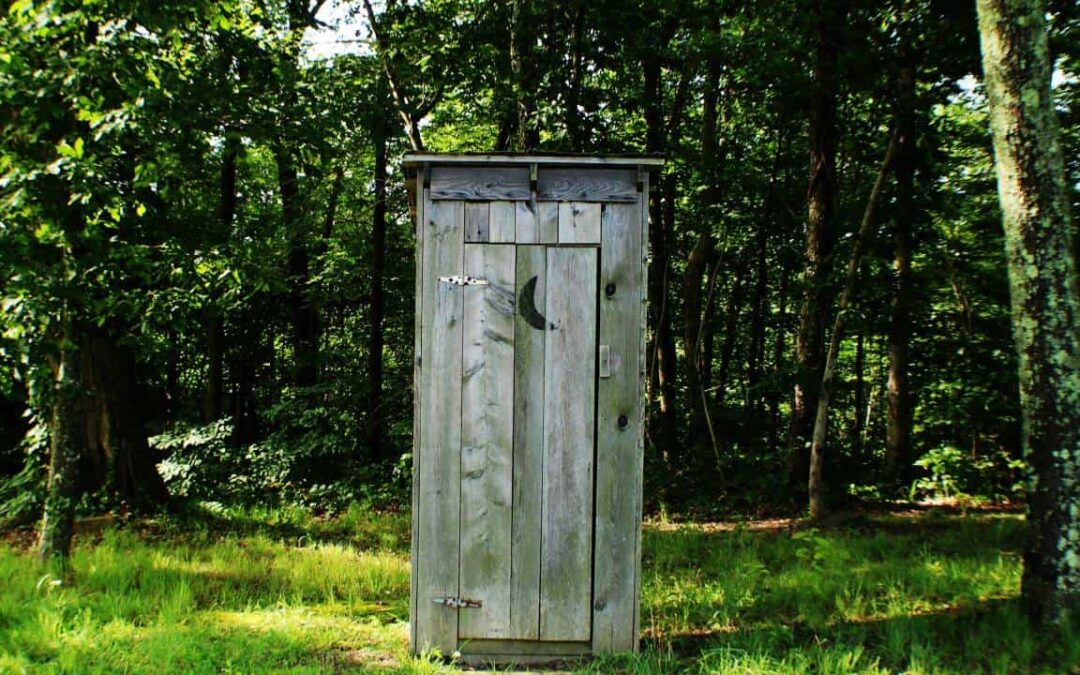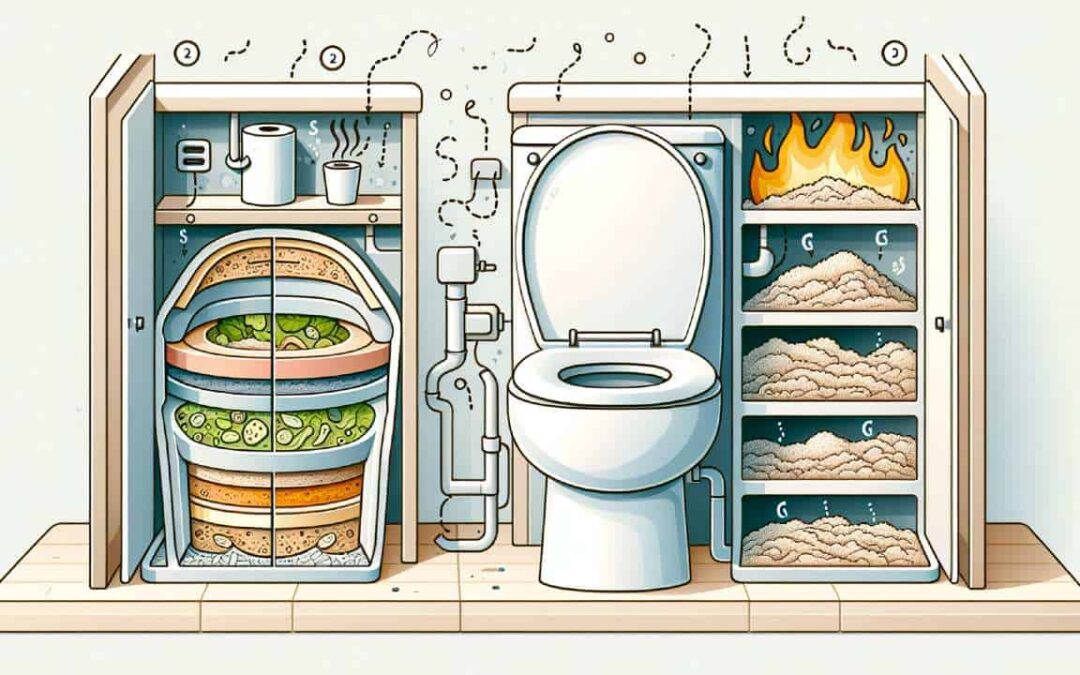Mushroom hunting is something that is often passed down from one generation to another. I remember looking for mushrooms with my father when I was a mere nine years old. I grew up in Illinois, near an old barge canal that had become nothing more than a local fishing spot.
It was a place kids went to catch spiny soft-shelled turtles in the summertime and play with friends. Those were some of the best times of my childhood.
Today, I am going to teach you how to get started hunting mushrooms. I have prepared for you 8 tips for finding and securing your mushrooms so that you can experience the joys of being able to harvest incredibly nurturing mushrooms from Mother Nature (without accidentally offing yourself), and also pass these skills down to your kids.
Without further ado, let’s jump into it.
Why Mushroom Hunting is More Than Just a Hobby
A single morel mushroom against the forest floor.
Foraging for wild food was something my father did as a child. His mother, my grandmother, grew a Victory Garden in the era of World War II. Dad was born in 1938. He grew up helping Grandma tend that garden too. It was a time when Americans understood the value of growing their food and finding what they could in the wild.
They spent a lot of hours fishing to bring home supper and foraging for wild plants to serve with it. Nothing is as delicious as fried catfish with wild asparagus, wild onions, and mushrooms fried in some butter. Today, I want to talk to you about mushroom hunting tips and gear.
Did I mention that my father was the youngest of nine children? His father was drafted in World War I and held a World War II draft card. Times were far different back then, but today parents still struggle to put food on the table.
We spend more at the grocery store than any generation before us. We’ve grown dependent on food chains that broke down all too easily when a pandemic lifted its ugly head to sneeze in our direction
Mother Nature provides so much; there’s food all around us if we just open our eyes and look. Some people have simply quit looking beyond the grocery store.
Why mushroom hunt?
They are delicious.
It’s physical activity to get you all moving.
It’s a chance to spend quality time with your children.
Teach your children about the great outdoors.
Get those kids away from video games.
Get your kids involved in cooking their finds.
Helping children understand the food cycle and basic science.
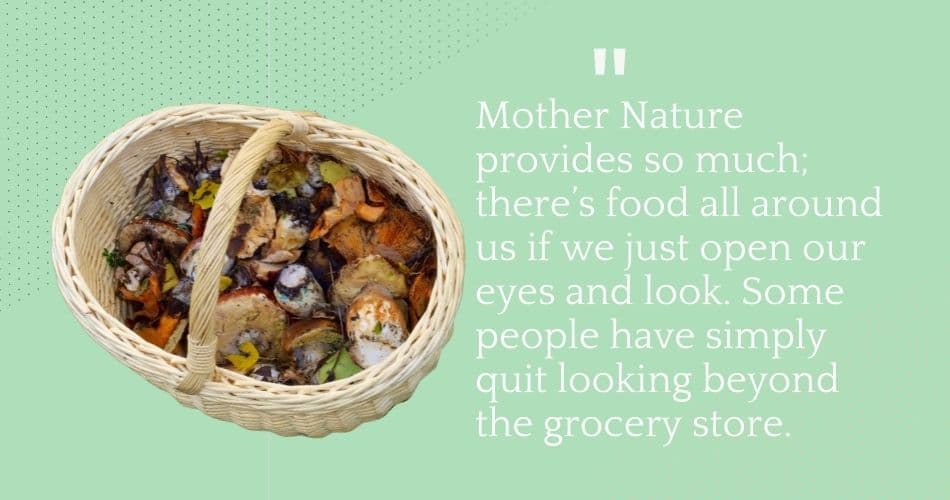
Your Eight Mushroom Hunting Tips
1. Be Prepared for Anything When Harvesting Mushrooms
Always have bug spray, mosquito and tick repellent, a knife, a flashlight, sunscreen, duct tape (I’ll explain later), a breathable bag or a basket for your mushrooms, and water. Most mushroom hunting is done in the woods. You want to be wearing appropriate shoes for the terrain and any encounters with snakes.
I like to take duct tape with me everywhere because it fixes so many things. If you start losing the heel of your boot, for example, you can wrap duct tape around your foot and hold it together–trip saved! I always have a flashlight in my backpack. You never know what can happen. If you sprain an ankle and find yourself limping back to the car near sundown, you’ll be glad you’ve got that flashlight. It’s a simple thing to carry with you.
Wear long pants no matter how tempting shorts are. Chiggers are thick in the woods; so are ticks. Cover yourself from head to toe; wear a hat too. Use plenty of spray to keep pests away. There is no such thing as too much repellant when you are in the woods.
The best places to find mushrooms are often damp, wooded areas that are thick with bugs and mosquitoes. If bears are found in your area, take bear spray with you. Make it a point to be loud as you walk. Most bears will shun human contact if they hear you coming.
There isn’t really any special mushroom hunting gear you need to have. Just carry a pocketknife or pruning shears, a bag or basket, a soft-bristled toothbrush or paintbrush to wipe away the dirt from your mushrooms and you’re set.
2. Know Your Mushrooms!
In the beginning, when you are learning about mushrooms, it is best to learn one or two types of easy mushrooms and stick with only those. Try to find a local friend that you can take mushrooms to for a second expert opinion, as well.
Take photos of the place the mushroom was found, the top of it, the bottom of it to clearly show gills or no gills, the stems, and note if it was found on a tree or the ground. It also helps to know if this was found alone or in a grouping of other mushrooms. Two of the easiest mushrooms to identify are morel and puffballs.
This doesn’t mean there aren’t false morels or puffball look-alikes. Have your plan to get an identification, so you are 110% sure of your find before you eat them. This is important to instill in your children.
While some plants are forgiving, poisonous mushrooms are often not. Some types will kill you and have no known antidote. Some types will mess with your mind to the point of total insanity (and you may not ever recover). Teach your children not to touch anything until you deem it safe.
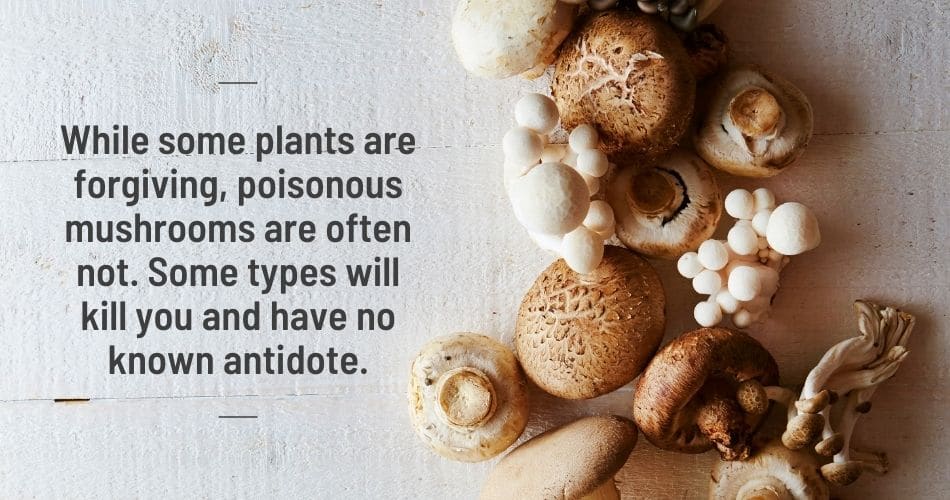
3. Harvest Wild Mushrooms Ethically
Don’t take more than you need and make sure that you harvest your mushrooms in a way that spreads the spores around so more will grow. This is why many people suggest using a basket or an open-weave cloth, like cheesecloth, so that the spores will spread as you walk around.
You should also cut your mushrooms at their base with a pocketknife, don’t pull them out from the ground. This can allow more to regrow in the same place. You or the next person will likely find more growth in this same place in a few weeks. Always perform your hunt ethically.
Don’t take more than you need and waste any. Allow spores to spread. Don’t trash the environment while you are out there in the woods. Hike out any trash such as plastic water bottles you take with you. Don’t trample other plants, break up rotten wood, etc.
These are all part of the natural environment that promotes the growth of wild plant species and as well as provides a home to important insect species. Tread carefully and teach your children how to do so. It’s also important to make sure you only harvest where it is legal.
Not all state land allows mushroom gathering. Many state and national parks explicitly forbid it. Do not trespass on private property but do ask. It never hurts to knock on a door and ask.
Some people will not care if you mushroom hunt on their back forty. Ask first and if they say yes, don’t hesitate to offer them some of your take or cook them a dish, or drop off a cake at Christmas. Courtesy will win every time.
4. Know the Environment Your Mushrooms Will be Growing in
If you plan on hunting for morel mushrooms, for example, they are typically found in leaf litter. They can blend in with their environment so well that they are easily overlooked by the untrained eye.
They love oak, ash, elm, and aspen trees. Keep your eyes out for these trees and also for dead and decaying trees. Morels are often found near the base of any of these types of trees. You can take the time to prep children on how to spot those trees and then to sound the alarm if they see something you should look at.
An Aspen tree forest, a potential goldmine for morel mushrooms.
You’ll find that children have fantastic eyes and, in the case of siblings, are often quite competitive in these mushroom hunting forays. Many times, children will spot mushrooms faster than you do!
Perhaps it is their bright, young eyesight, maybe it is their shorter stature that puts them closer to the ground? At any rate, children make great mushroom finders!
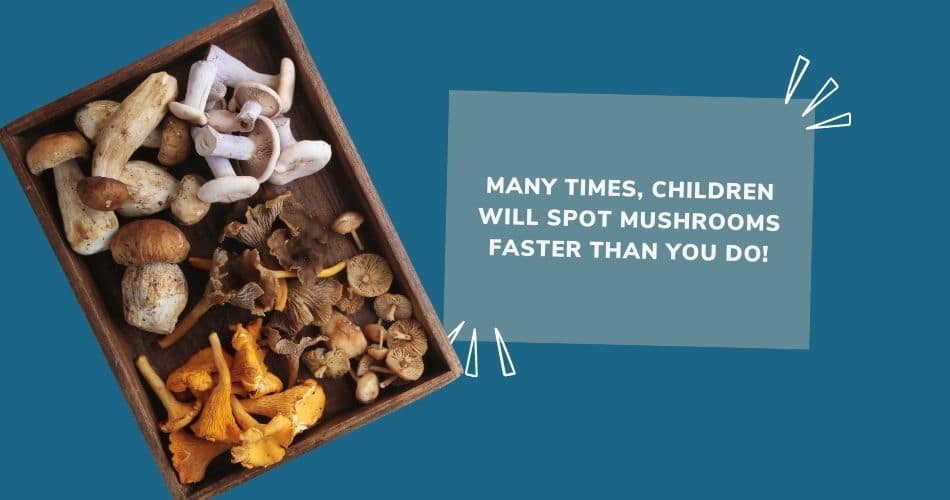
5. Know the Season for Your Chosen Mushroom Hunt
If you are planning to go hunt for a particular type of mushroom, make sure you know the best time to mushroom hunt.
Otherwise, you’re just wasting time. It’s worth a little research to find what mushrooms can be found in your area in any given month. Join local mushroom hunting groups on social media. They are a wonderful source of information.
Make sure you join a site where experts will identify photos of mushrooms you post. That’s a great way to get additional identification to boost your confidence. Once you’ve got the right season, you’ve researched where to look for them, and you’re prepared for any situation, you’re ready to start looking.
6. Learn The Associated Plants
It’s a fact that certain plants like to group together. Scientists are still learning about how trees have babies that they care for by sending nutrients through their root systems to new trees, to help them survive.
Some plants need other particular plants to help them survive as well. This is called a symbiotic relationship. Mushrooms can be spotted with greater ease by identifying surrounding symbiotic plants.
For example, when hunting morels (I’m sticking with this example because they are a great first mushroom to learn about), you’ll note that they love hardwood trees. If you go to the hardwood forests of oak trees, ash, elm, cottonwood, and so forth, you’ll likely stand a great chance of finding morel mushrooms.
But…you’ll also note that morels prefer to be near mayapples, trillium plants, and umbrella plants. If you learn how to identify these plants too, the odds drastically increase that you’ll find some morels!
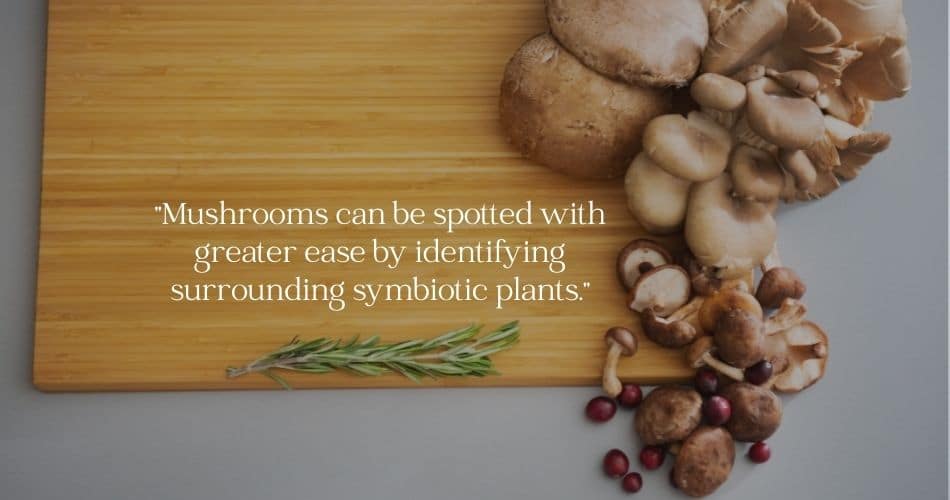
7. Know if Your Mushroom of Focus Grows in Clusters
Again, sticking with morels as an example, they grow in clusters most of the time. That means if you spot one morel, you should scour that area for more.
Spread out in a line and have everyone walk together in the same direction. This way, you’ll see everything. If you find one, there are likely a dozen more waiting for you to find them. If you find other types of mushrooms but aren’t sure what they are, take some photos of the area and the mushroom.
If you’re pretty sure it is chicken of the woods or oysters and want to take it, just don’t eat it until you have someone identify it for you. Just do it safely.
8. Don’t Tell Anyone About Fight Club
Okay, it isn’t fight club, but I’ve seen it turn into fights. Mushroom hunters do not disclose where they find their mushrooms. Don’t ask them. Don’t tell them where you found yours either.
Mushrooms are like gold in some circles. Morel mushrooms can sell for $30 per pound when they are in season. Some professional hunters will collect five to ten pounds per day and sell them. It can be very competitive.
People will try to con you out of your honey holes. Mushroom hunters who work for profit will get cutthroat and try every which way to get your best hunting spots. Don’t disclose them or you’ll never find another mushroom again, hyperbolically speaking, of course. 🙂
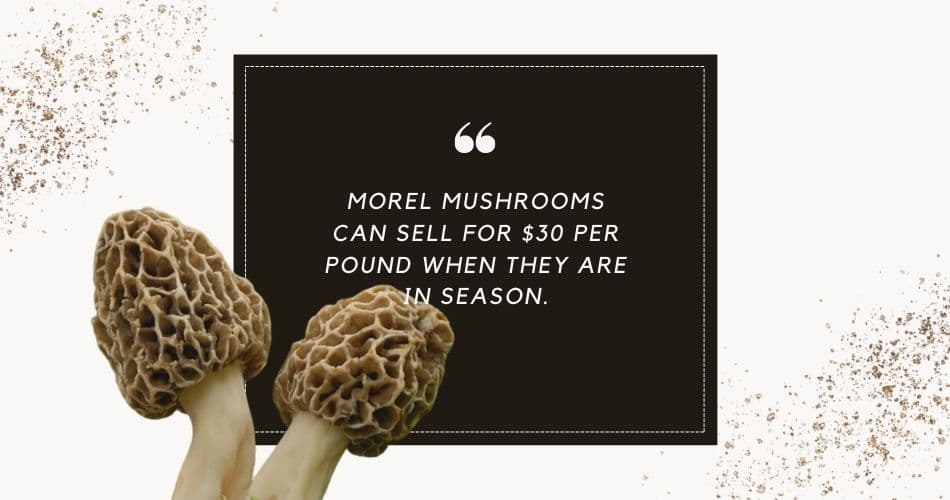
Closing words…
Some people have handed down mushroom hunting spots from one generation to another for four or five generations. It’s serious stuff, this mushroom hunting, but it can be a lot of fun too. Get out in nature. Find your supper. It’s out there waiting to be found.
Interested in learning more? Check out our related content:
